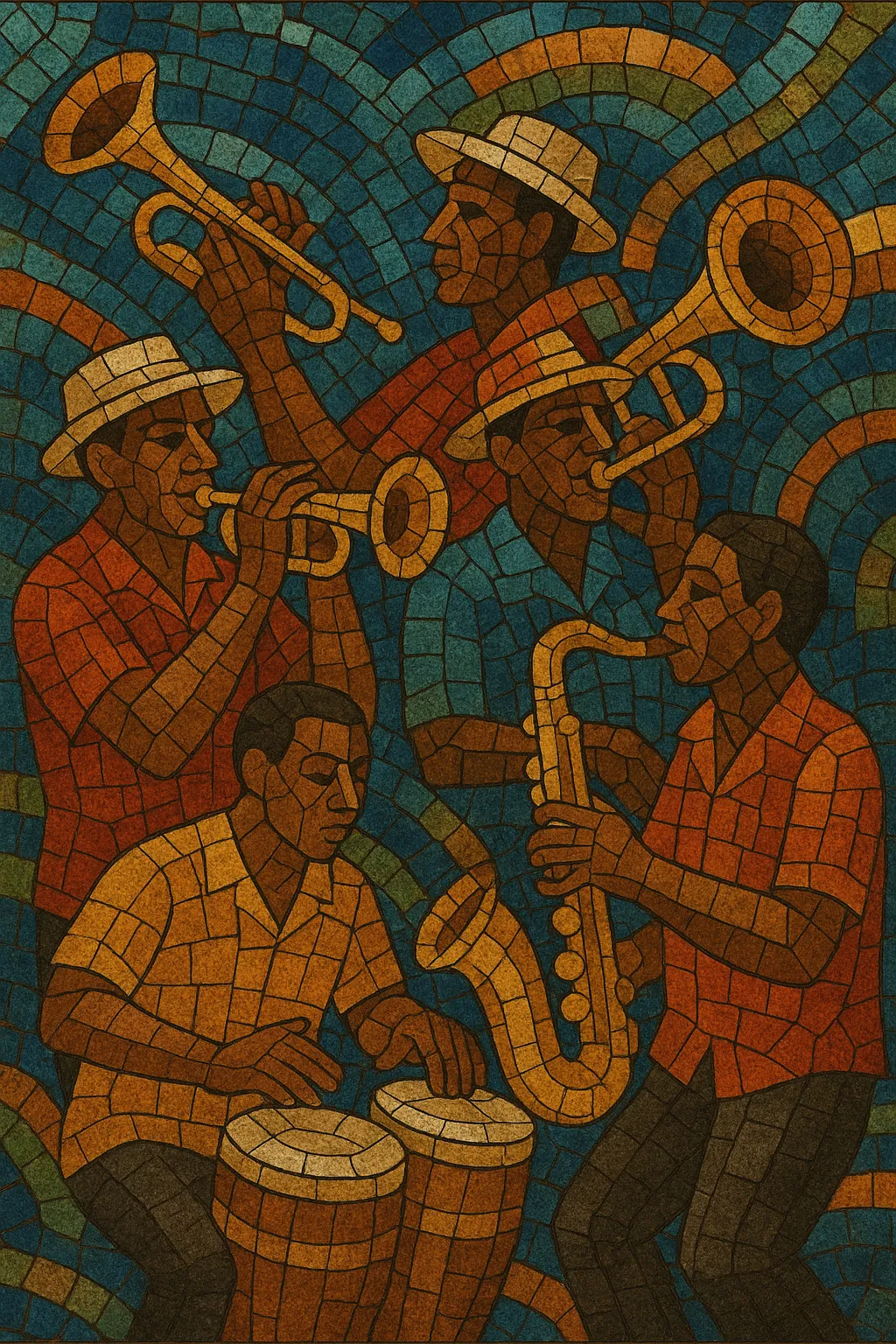Xuc is a lively Salvadoran dance-music style characterized by bright brass riffs, fast two-step rhythms, and festive call-and-response melodies.
It sits in the broader tropical spectrum alongside cumbia and merengue, but its groove and dance steps are distinctly Salvadoran, with shuffling, sliding footwork that mirrors its propulsive percussion patterns.
Typical ensembles feature trumpets, trombones, saxophones, bass, guitar or piano, and a percussion core of güiro, congas, timbales, cowbell, and drum kit.
The harmony tends to favor major keys and straightforward I–IV–V progressions, while arrangements spotlight catchy horn hooks and energetic, dance-forward structures.
Xuc originated in El Salvador in the 1940s, closely associated with composer and bandleader Francisco “Paquito” Palaviccini. Drawing on the energy of regional dance bands, Afro-Caribbean rhythms, and the brassy, riff-driven sound of tropical orchestras, Palaviccini shaped xuc as a distinct style tailored to local festivities and popular dance culture.
By the 1950s and 1960s, xuc had become a popular staple of Salvadoran dance halls and town festivals. Touring orchestras and radio broadcasts helped codify its brisk two-step feel, syncopated güiro and cowbell patterns, and signature brass hooks. The music’s celebratory character and straightforward, singable melodies made it a favorite at carnivals and municipal fiestas.
Through the late 20th century, xuc coexisted with and influenced the development of Salvadoran cumbia, with many orchestras performing both repertoires. While international tropical trends (salsa, merengue, and cumbia variations) surged, xuc retained a symbolic status within El Salvador as a proudly local dance style, taught by folkloric ensembles and performed by popular orchestras. Today it remains a cultural touchstone, frequently revived at national celebrations and folkloric showcases.


